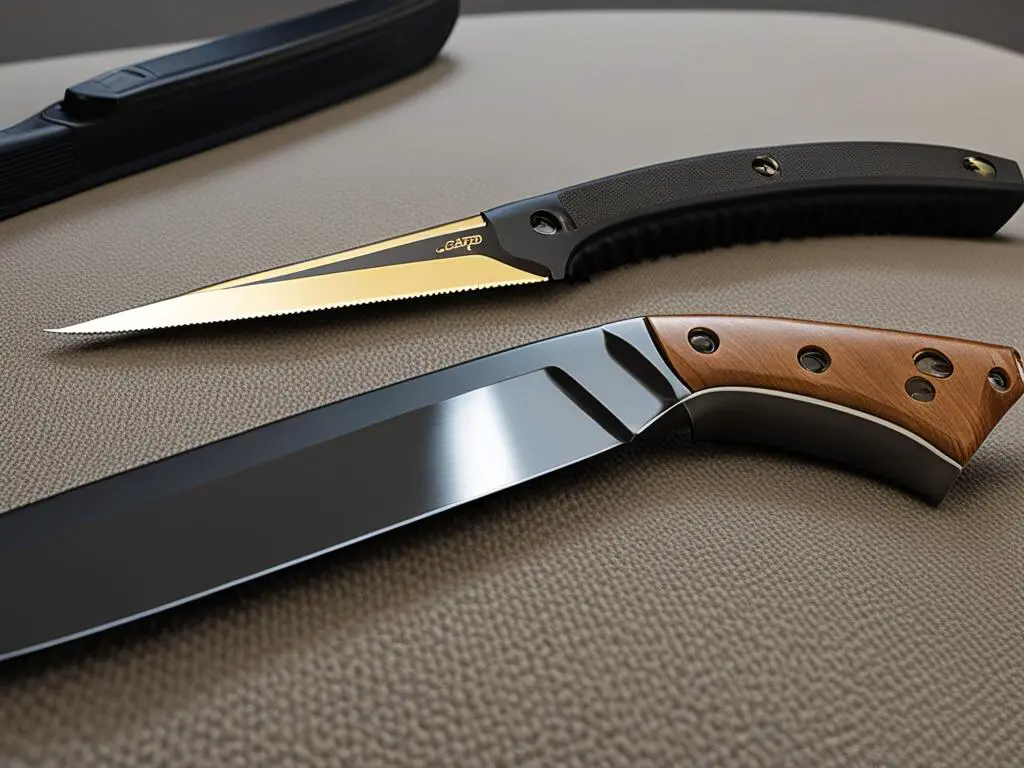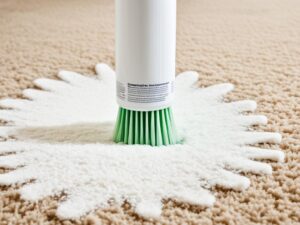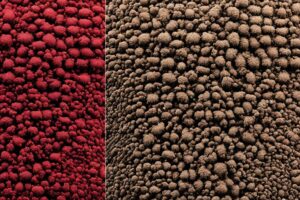A carpet knife and a utility knife may look similar, but they serve different purposes and have distinct features. Understanding the differences between these tools is essential for tackling cutting tasks effectively. Whether you’re a professional carpet installer or a DIY enthusiast, knowing when to reach for a carpet knife or a utility knife can make a world of difference.
Key Takeaways:
- A carpet knife is designed specifically for cutting soft materials like carpets and fabrics.
- Utility knives are versatile tools suitable for various cutting tasks, such as opening boxes or cutting tape.
- Carpet knives have a square blade design, providing precision and reducing the risk of accidental damage to flooring.
- Utility knives typically have straight blades and offer convenience for general-purpose cutting.
- When shopping for a carpet knife, consider the blade change mechanism, body style, and handle design.
What Does a Carpet Knife Look Like?
A carpet knife is a small, lightweight hand tool that resembles a utility knife or box cutter. However, it has some unique features that set it apart. Let’s take a closer look at the design and features of a carpet knife.
A carpet knife typically has an angled handle, which provides better leverage for cutting through tough carpet. This ergonomic design allows for a comfortable grip and reduces strain on the hand and wrist during use.
The blade placement mechanism of a carpet knife can either be retractable or fixed. This allows for easy blade changes and ensures that the blade is securely locked in place during cutting tasks.
The blade itself is square and razor-sharp, making it perfect for precision cutting. The square blade design also adds stability and strength, reducing the likelihood of the blade snapping during use. This feature helps prevent accidental damage to the flooring underneath the carpet, ensuring clean and accurate cuts.
Key Features of a Carpet Knife:
- Angled handle for better leverage
- Retractable or fixed blade placement mechanism
- Square and razor-sharp blade for precision cutting
With its compact size and unique design, the carpet knife is the perfect tool for cutting carpets and other soft materials with precision and ease.
How Is a Carpet Knife Different From a Utility Knife?
The main difference between a carpet knife and a utility knife lies in their intended use and blade design.
A carpet knife is specifically designed for cutting soft materials like carpets and fabrics. It features a thin, double-sided square blade that provides precise cuts and long-lasting performance. The square blade design makes it less likely to snap during use, ensuring durability and safety. The carpet knife’s sharp blade allows for clean and accurate cuts, leaving minimal fraying or damage to the material.
On the other hand, utility knives are more versatile and can be used for various cutting tasks. They typically have straight blades and are suitable for general-purpose cutting, such as opening boxes or cutting materials like cardboard, tape, and plastic. Utility knives are commonly found in households and workplaces, as they offer a convenient tool for everyday cutting needs.
While both carpet knives and utility knives share similarities in their appearance and handle design, it’s the intended use and blade characteristics that set them apart.
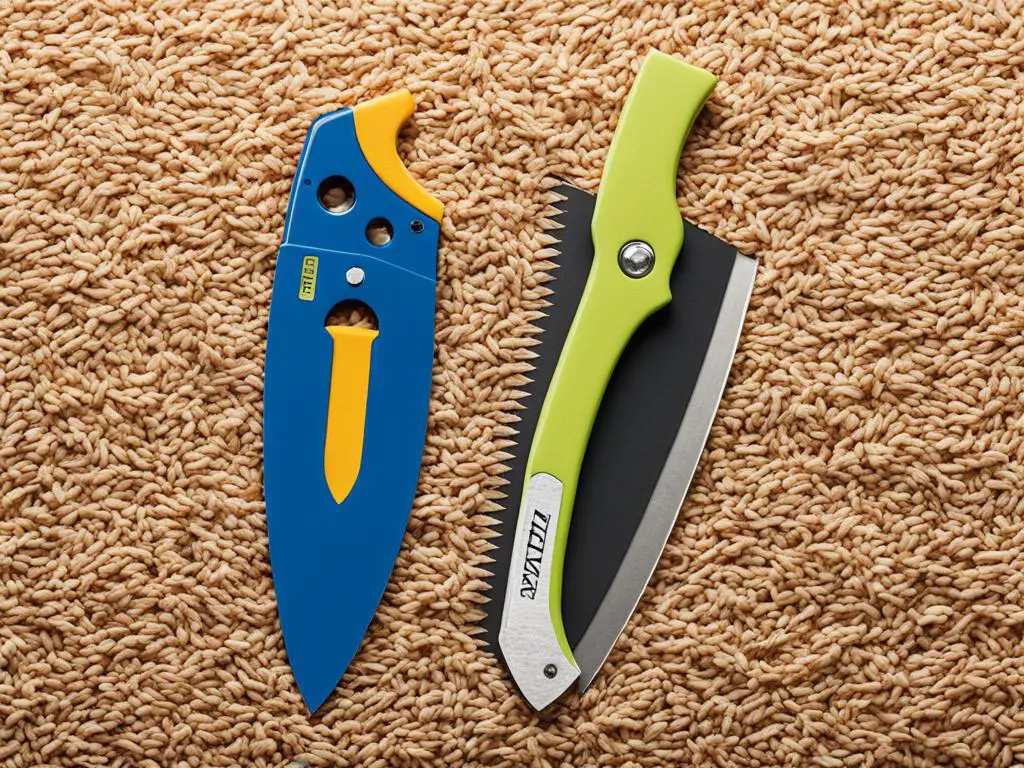
Differences between Carpet Knife and Utility Knife:
- A carpet knife is specifically designed for cutting soft materials like carpets and fabrics, while a utility knife is more versatile and suitable for general-purpose cutting tasks.
- A carpet knife has a thin, double-sided square blade, whereas a utility knife typically has a straight blade.
- The blade of a carpet knife is less likely to snap during use compared to a utility knife.
- Carpet knives provide precise cuts with minimal fraying or damage to the material, while utility knives offer convenience for everyday cutting needs.
Key Characteristics of Carpet Knife and Utility Knife:
| Characteristics | Carpet Knife | Utility Knife |
|---|---|---|
| Intended Use | Cutting soft materials like carpets and fabrics | General-purpose cutting tasks |
| Blade Design | Double-sided square blade | Straight blade |
| Blade Durability | Less likely to snap | Depends on the specific brand/model |
| Precision | Provides precise cuts with minimal fraying | Depends on the specific brand/model |
What Are Carpet Knives Used For?
Carpet knives are versatile tools that find numerous applications in cutting tasks across various industries. Whether you’re a professional carpet installer or a DIY enthusiast, a carpet knife is an essential tool that will make your cutting tasks easier and more precise.
“Carpet knives are a go-to tool for cutting carpets and other soft flooring materials during installation or removal.”
When it comes to carpet-related tasks, carpet knives are the recommended choice due to their thin and sharp blades. They excel in creating clean and accurate cuts, ensuring minimal damage to the underlying flooring materials. Here are some common applications and recommended tasks for carpet knives:
1. Cutting Carpets
The primary use of carpet knives is, of course, cutting carpets. They are specifically designed to slice through the dense fibers and backing materials of carpets with ease. Whether you need to trim carpets to fit a specific area or make precise cuts during installation, a carpet knife is the perfect tool for the job.
2. Carpet Installation and Removal
During the installation or removal of carpets, a carpet knife is indispensable. It allows you to cut carpet rolls or pieces to the desired size, ensuring a proper fit in any room or area. Additionally, carpet knives simplify the removal process by facilitating the dissection and separation of old or damaged carpets.
3. Trimming Leather and Upholstery
Carpet knives are not limited to cutting carpets alone. They are also suitable for trimming leather and upholstery materials. Whether you’re working on upholstery repairs or custom leather projects, a carpet knife provides the precision and control needed to achieve clean and precise cuts.
4. Scoring Drywall Panels
When it comes to tasks like scoring drywall panels for accurate cutting or creating neat and straight lines, carpet knives excel in providing the necessary precision. With their razor-sharp blades, they allow for easy scoring, ensuring clean and controlled cuts.
5. Lightweight Ceiling Tiles
Carpet knives are ideal for cutting lightweight ceiling tiles. Their thin, sharp blades allow for precise and effortless cutting, ensuring accurate measurements and reducing the risk of damage to the tiles. Whether you’re working on a residential or commercial project, a carpet knife is a reliable tool for this task.
In summary, carpet knives have multiple applications and are particularly useful for cutting carpets, trimming leather and upholstery, scoring drywall panels, cutting lightweight ceiling tiles, and more. Their thin and sharp blades make them the go-to tool for tasks that require precision and control. Whether you’re a professional or a DIY enthusiast, a carpet knife is a valuable addition to your toolkit.
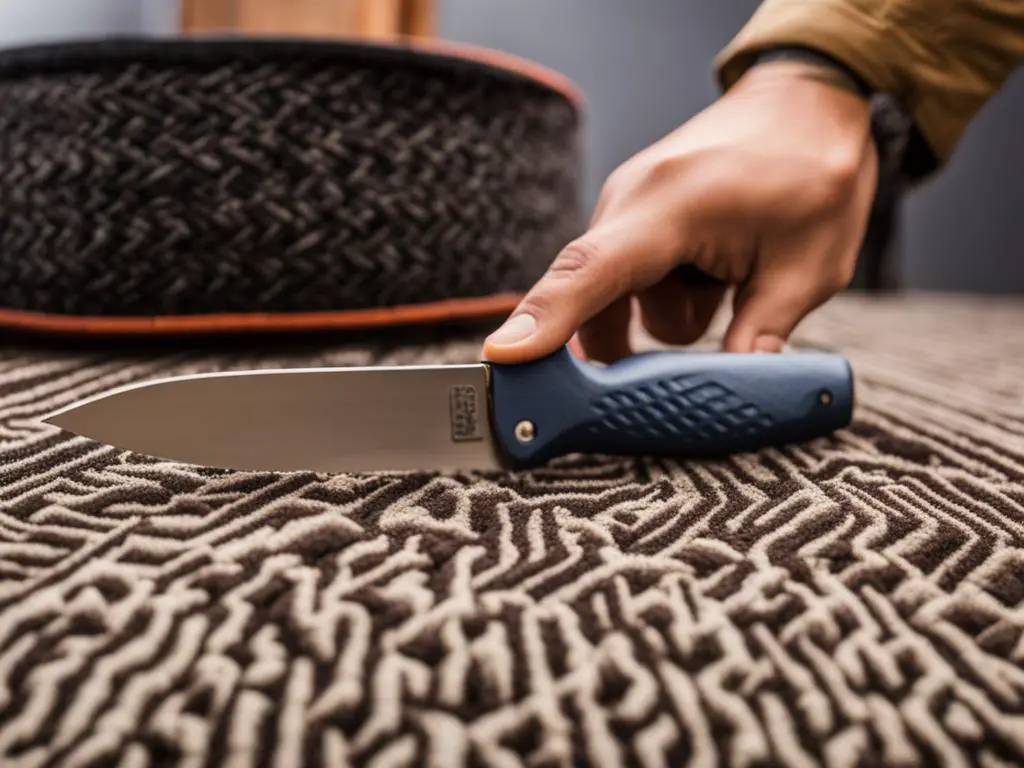
Buying a Carpet Knife
When shopping for a carpet knife, there are a few important factors to consider to ensure you make the right choice for your needs. By taking these tips into account, you’ll be able to purchase a carpet knife that will meet your expectations and provide excellent performance.
- Blade Change Mechanism: Consider the mechanism used for blade replacement. Some carpet knives feature a convenient D-ring for easy blade changes, while others may require a screwdriver. If you anticipate needing frequent blade changes, opt for a carpet knife with a D-ring mechanism for added convenience.
- Body Style: The body style of the carpet knife is another important consideration. Fixed blade carpet knives are generally more durable, but they have an exposed blade, so it’s crucial to prioritize safety and take proper precautions during use. On the other hand, folding blade carpet knives offer convenience and easy storage.
- Handle Design: Evaluate the handle design of the carpet knife. Look for a hook handle that provides better control and reduces forearm fatigue, especially if you’ll be using the knife for extended periods. A comfortable and ergonomic handle will make your cutting tasks easier and more efficient.
By considering these tips, you’ll be able to select a carpet knife that suits your specific needs and preferences. Whether you’re a professional carpet installer or a homeowner tackling a DIY carpet project, a well-chosen carpet knife will make the job easier and help you achieve precise and clean cuts.
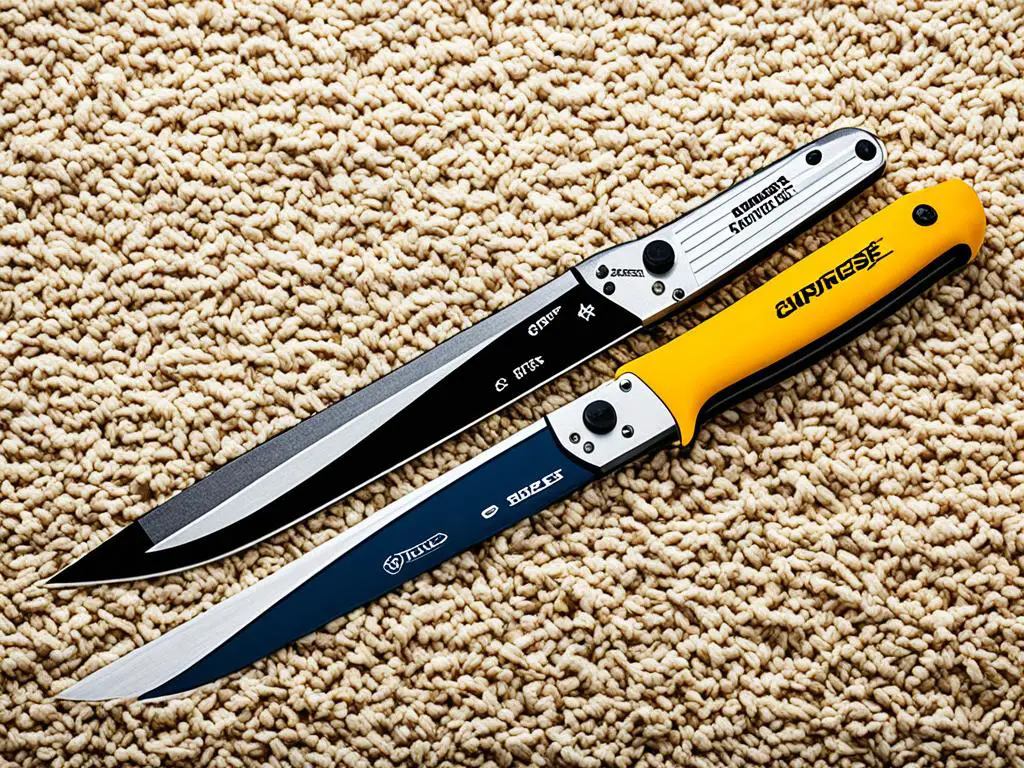
| Considerations for Buying a Carpet Knife: |
|---|
| Blade Change Mechanism |
| Body Style |
| Handle Design |
Conclusion
In conclusion, the comparison between a carpet knife and a utility knife reveals clear distinctions in terms of features and intended use. The carpet knife is specifically designed for cutting soft materials like carpets and fabrics, offering precise cuts and long-lasting performance with its thin, double-sided square blade. On the other hand, the utility knife is a versatile tool that can handle a wide range of cutting tasks, making it suitable for general-purpose cutting such as opening boxes or cutting materials like cardboard, tape, and plastic.
When deciding between a carpet knife and a utility knife, it is important to consider the specific task at hand. If you need to cut soft materials like carpets and fabrics, a carpet knife would be the ideal choice due to its specialized design. However, if you anticipate a variety of cutting tasks in your projects, having a utility knife in your toolkit would provide the versatility you need.
In conclusion, both the carpet knife and the utility knife have their own unique strengths and purposes, and the right choice ultimately depends on the task requirements. By understanding the differences and considering your specific needs, you can make an informed decision and ensure you have the right tool for the job. Whether you’re a professional in the flooring industry or a DIY enthusiast, having both a carpet knife and a utility knife in your arsenal will equip you for any cutting task that comes your way.
FAQ
How is a carpet knife different from a utility knife?
A carpet knife is specifically designed for cutting soft materials like carpets and fabrics, while a utility knife is a versatile tool that can handle a wide range of cutting tasks.
What does a carpet knife look like?
A carpet knife is a small, lightweight hand tool that resembles a utility knife or box cutter. It typically has an angled handle and a square, razor-sharp blade.
How is a carpet knife different from a utility knife?
The main difference lies in their intended use and blade design. A carpet knife has a thin, square blade that provides precise cuts in soft materials, while a utility knife often has a straight blade and is suitable for general-purpose cutting.
What are carpet knives used for?
Carpet knives are primarily used for cutting carpets and other soft flooring materials. They are also useful for cutting lightweight ceiling tiles, trimming leather, scoring drywall panels, and other cutting tasks that require precision and control.
What should I consider when buying a carpet knife?
When shopping for a carpet knife, consider the blade change mechanism, body style (fixed or folding blade), and the handle style that suits your needs and preferences.
Conclusion
A carpet knife and a utility knife have distinct features and are designed for different purposes. When choosing between the two, consider the specific task at hand and decide which tool will provide the best results.
